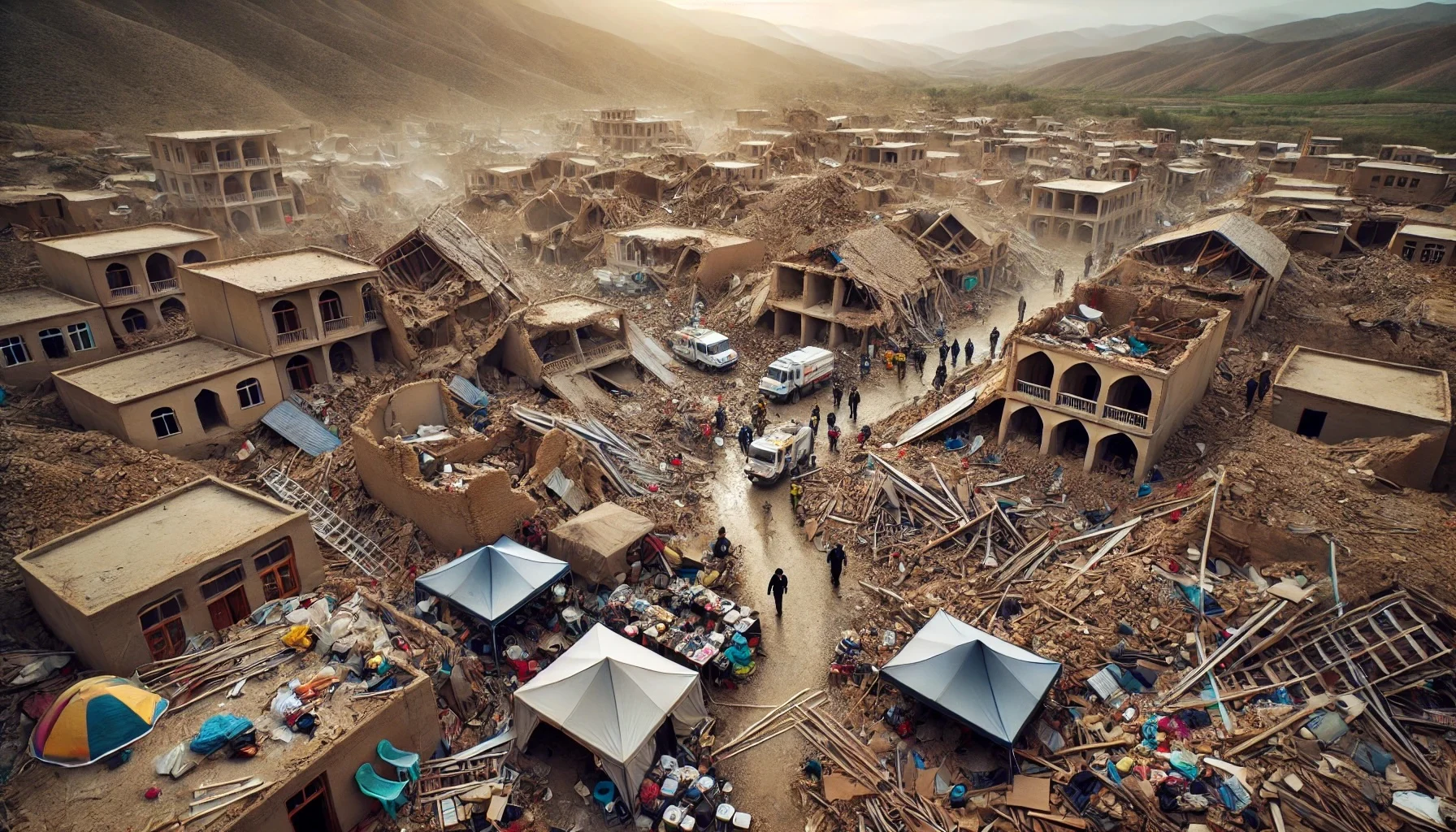
The 2012 East Azerbaijan Ahar Earthquakes
by: The Calamity Calendar Team
August 11, 2012
In the rugged and mountainous terrain of northwestern Iran, where the Arabian Plate grinds against the Eurasian Plate, seismic activity is a constant threat. On August 11, 2012, this threat materialized with devastating force. In the East Azerbaijan Province, an area known for its seismic vulnerability, life changed dramatically as two powerful earthquakes rocked the region in quick succession.
The Twin Shocks
The afternoon began like any other, but at 4:53 PM local time, the ground beneath the city of Ahar began to tremble. A powerful 6.4 magnitude earthquake shook the region, its epicenter located 23 kilometers southwest of the city. Panic spread as buildings swayed and crumbled, the people of Ahar and surrounding villages grappling with the sudden ferocity of nature.
Less than 11 minutes later, as the dust began to settle, a second earthquake struck. This time, a 6.3 magnitude tremor emanated from an epicenter 31 kilometers northeast of Tabriz, near the town of Varzeghan. The second shock compounded the damage inflicted by the first, reducing structures already weakened to rubble. The afternoon that began in relative tranquility had, within minutes, become a scene of chaos and devastation.
The Human Toll
The earthquakes left a grim toll in their wake. More than 306 people lost their lives, and over 3,000 sustained injuries. Rural villages, characterized by their mud-brick homes ill-equipped to withstand such forces, bore the brunt of the destruction. Across 180 villages, more than 20,000 homes were damaged or destroyed, leaving thousands without shelter. For many, the landscapes of their lives had shifted irrevocably, their homes reduced to piles of stone and earth.
Thanks for subscribing!
Amid the ruins, the human spirit faced its greatest test. Families searched for loved ones, while communities came together in shared grief and solidarity. The twin earthquakes had not only shaken the earth but had also shaken the very foundations of these communities, forcing them to confront a new, uncertain reality.
The Immediate Response
In the immediate aftermath, the Iranian government, along with the Iranian Red Crescent Society, mobilized a swift response. Relief efforts were mounted to deliver essential supplies, including tents, blankets, food, and medical care, to those affected. Rescue operations commenced, though the remote locations of many villages and the destruction of roads posed significant challenges.
International aid was offered from various countries and organizations, yet the Iranian government predominantly relied on domestic resources to address the crisis. Despite the formidable obstacles, the resilience of the Iranian people shone through as they navigated the complexities of the disaster response.
Recovery and Rebuilding
The path to recovery was a long and arduous one. The Iranian government pledged to rebuild the affected areas, with a renewed focus on constructing more earthquake-resistant homes. The commitment to resilience extended beyond reconstruction, encompassing improvements in early warning systems and emergency response strategies.
In the wake of the earthquakes, scrutiny of building codes intensified, highlighting the urgent need for better construction practices in seismically active regions. The disaster underscored the importance of preparedness and adaptability in the face of nature’s unpredictability.
Lessons Learned and Future Preparedness
The 2012 earthquakes served as a stark reminder of the seismic realities facing Iran. In the years that followed, significant strides were made in enhancing the resilience of infrastructure and buildings. Advances in earthquake engineering, coupled with increased public awareness, have contributed to better preparedness for future seismic events.
Studies conducted in the aftermath of the disaster have deepened the understanding of the region’s seismic hazards, aiding in more accurate risk assessments. The lessons learned have shaped policy changes and fortified the resolve to build a safer, more resilient future.
A Legacy of Resilience
The earthquakes of August 11, 2012, are etched into the memory of those who lived through them, a testament to the enduring strength of the human spirit. In the face of overwhelming adversity, communities came together, demonstrating resilience and determination in the aftermath of disaster.
Stay in the Loop!
Become a Calamity Insider and get exclusive Calamity Calendar updates delivered straight to your inbox.
Thanks! You're now subscribed.